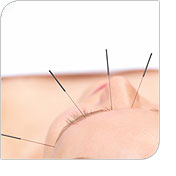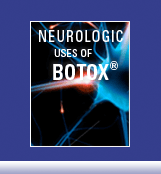 Trigeminal nerve pain is pain in the face. In its most typical form, it is described as brief, electric type sensations. It is also known as Tic Douloureux. Patients may have a series of these close together or they may occur hours apart. Often touching the affected area of skin triggers the pain. In addition, some patients have difficulty eating because that too can trigger the pain. The pain is usually distributed around one of the 3 branches of the trigeminal nerve. The first branch is over the eye. The second branch is across the cheek and into the top row of teeth. The third branch is across the jaw and into the bottom row of teeth.Because the pain is unilateral and only affecting a single nerve, it is important to eliminate a mass pressing on the nerve. Less commonly, patients with multiple sclerosis will present with this complaint. For this reason, MRI of the brain is recommended for patients presenting with this problem. In addition, depending on the location of the pain, sources of potential problems outside the skull need to be eliminated as well. This most typically includes the teeth. In general, teeth should only be worked on if an obvious lesion is identified and not simply as an attempt to follow the pain. Neurologists commonly see patients who had teeth pulled without beneficial results. Conversely, we are all aware of anecdotal stories of patients without obvious dental abnormalities on routine dental xray who did benefit from dental procedures.
Trigeminal nerve pain is pain in the face. In its most typical form, it is described as brief, electric type sensations. It is also known as Tic Douloureux. Patients may have a series of these close together or they may occur hours apart. Often touching the affected area of skin triggers the pain. In addition, some patients have difficulty eating because that too can trigger the pain. The pain is usually distributed around one of the 3 branches of the trigeminal nerve. The first branch is over the eye. The second branch is across the cheek and into the top row of teeth. The third branch is across the jaw and into the bottom row of teeth.Because the pain is unilateral and only affecting a single nerve, it is important to eliminate a mass pressing on the nerve. Less commonly, patients with multiple sclerosis will present with this complaint. For this reason, MRI of the brain is recommended for patients presenting with this problem. In addition, depending on the location of the pain, sources of potential problems outside the skull need to be eliminated as well. This most typically includes the teeth. In general, teeth should only be worked on if an obvious lesion is identified and not simply as an attempt to follow the pain. Neurologists commonly see patients who had teeth pulled without beneficial results. Conversely, we are all aware of anecdotal stories of patients without obvious dental abnormalities on routine dental xray who did benefit from dental procedures.
Treating Trigeminal Nerve Pain
In the past, these patients were typically treated with tricyclic antidepressants such as Elavil® (amitriptyline) or Pamelor (nortriptyline). These medications, however, sometimes cause too many side effects including weight gain, constipation, and sleepiness. Tegretol® was originally approved as a treatment of this disease even before it was approved as an antiepileptic drug (AED). Other AEDs used include Neurontin®, Lyrica® or Trileptal® . In addition, the SSNRI Cymbalta® is commonly used as well. These medications usually allow good control of the pain without side effects in most patients. When the oral medications fail to work, then a number of surgical procedures designed to damage the trigeminal nerve ganglion (either by cold, heat, or chemical) have been used. These all have the potential to make a portion of the face numb, but not weak.
There is also a surgical procedure where blood vessels are moved away from the nerve. Those surgeons who believe in this approach strongly believe in it and those surgeons who do not believe in this approach recommend against it.There is a good tutorial online that demonstrates nicely the nerves involved and surgical treatment options for trigeminal neuralgia. I do believe it has a strong neurosurgical bias as most patients with this disease do not progress and are readily controlled with medications. For those that cannot be well controlled without significant side effects, surgery is an effective option.
A good book on trigeminal neuralgia and facial pain written for the patient is Striking Back! The Trigeminal Neuralgia Handbook by George Weigel and Kenneth F. Casey, M.D. It was given to my by a patient and I have read it cover to cover. I think it explains the cause, treatment, and surgical options for this disease very well.



